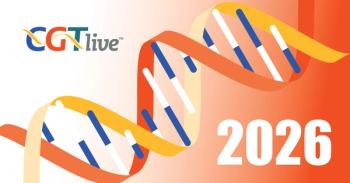
First In-Human Gene Therapy for Tay Sachs Disease Demonstrates Feasibility
Both patients dosed experienced a stable increase in cerebrospinal fluid HexA activity.
A first in-human assessment of adeno-associated virus (AAV) gene therapy in 2 patients with infantile
First author Terence R. Flotte, MD, Celia and Isaac Haidak Professor, provost and executive deputy chancellor, UMass Chan Medical School and dean, T.H. Chan School of Medicine, and colleagues dosed 2 female patients with infantile TSD with equimolar mix of AAVrh8-HEXA and AAVrh8-HEXB gene therapy. The first patient was treated at 30 months of age with 1 × 1014 vg administered intrathecally, with 75% of the total dose administered to the cisterna magna and 25% to the thoracolumbar junction. The second patient was treated at 7 months of age with 1.5 × 1012 vg bilaterally to the thalamus and 3.9 × 1013 vg intrathecally. Both patients were immunosuppressed.
The enrolled patients presented with differing clinical scenarios, demonstrating the range of disease: the first patient showed developmental delays at 5 to 6 months with seizure onset at 14 months, while the second patient was clinically well at enrollment at 6 months of age but was diagnosed shortly after birth with infantile TSD in light of family history.
“Unfortunately there is still no treatment for Tay-Sachs. Aggressive medical treatment can extend survival but doesn’t improve neurological function. The only effective way to treat Tay-Sachs is to restore the HexA enzyme in the brain. This is difficult, however, because the blood-brain barrier prevents most molecules from passing into the brain,” wrote senior author Miguel Sena-Esteves, PhD, associate professor of neurology and member, Horae Gene Therapy Center, in a related statement.2
READ MORE:
Investigators observed that cerebrospinal fluid (CSF) HexA activity increased from baseline and remained stable in both patients. The second patient had stable disease by 3 months after treatment with ongoing myelination, with a Children's Hospital of Philadelphia Infant Test of Neuromuscular Disorders (CHOP-INTEND) score of around 60, which deviated from natural history, but disease progression again at 6 months after treatment, with CHOP-INTEND score decreasing to 52. The patient developed seizures responsive to levetiracetam (Keppra; UCB Pharmaceuticals) at 2 years of age and has demonstrated some neurodevelopmental deterioration but no seizure recurrence.
The first patient treated remains seizure-free at 5 years of age while being treated with the same anticonvulsant therapy (levetiracetam) as before therapy. CHOP-INTEND score has remained stable at around 20. Investigators did not note significant change in electroencephalograms, auditory brainstem responses, and retinal examination findings in the first 6 months after therapy. Data were not available past this time due to health-related travel restrictions.
“More testing is needed to confirm whether our treatment can fully stop disease progression. Given that this was the first time our treatment was given to humans, we used a conservative dose below the maximum therapeutic effects we saw in our animal studies. My colleagues and I are currently conducting a follow-up clinical trial to test the safety and efficacy of increasing doses in a larger number of patients,” Sena-Esteves wrote.2
The gene therapy and administration were well-tolerated, with no treatment-related adverse events reported to date. The first patient experienced an unrelated, serious AE of pneumonia. Mild-to-moderate unrelated AEs included fever, rash, and cough.
“The increasing cost of manufacturing these treatments makes it extremely difficult, if not impossible, to develop and test gene therapy for many ultrarare diseases where the number of patients worldwide is very small and profitability low,”Sena-Esteves wrote.2
This difficulty in developing therapies for rare indications is not unique to TSD – the recent international Rare Disease Day drew attention to the over 7000 diseases recognized as “rare” and the over 300 million people worldwide that experience these conditions. CGTLive previously spoke with multiple clinical and industry leaders about advancing treatments in rare diseases and the importance of collaboration in achieving this.
REFERENCES
1. Flotte TR, Cataltepe O, Puri A, et al. AAV gene therapy for Tay-Sachs disease. Nat Med. 2022.28; 251–259. doi:10.1038/s41591-021-01664-4
2. First gene therapy for Tay-Sachs disease successfully given to two children. News release. UMass Chan Medical School. February 14, 2022. https://www.umassmed.edu/news/news-archives/2022/02/first-gene-therapy-for-tay-sachs-disease-successfully-given-to-two-children/
Newsletter
Stay at the forefront of cutting-edge science with CGT—your direct line to expert insights, breakthrough data, and real-time coverage of the latest advancements in cell and gene therapy.






























